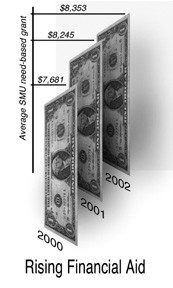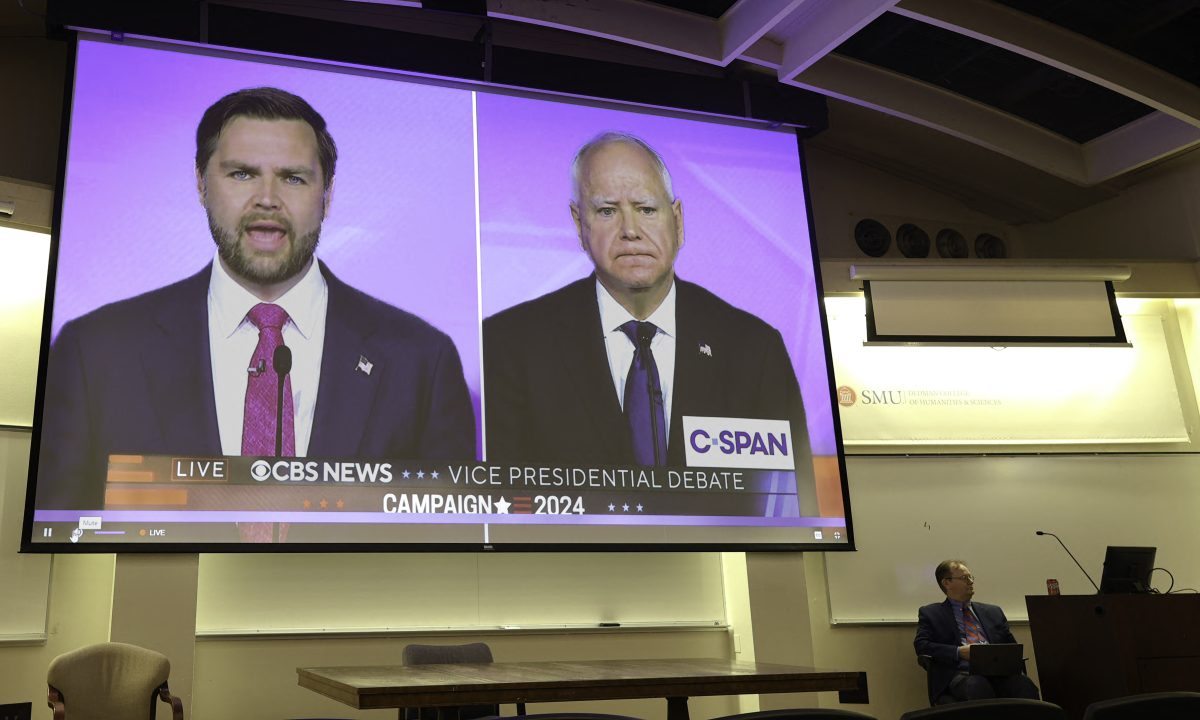
Crunch time
Junior Dean Edwards is hoping the spring semester brings fewer surprises than this past fall did. The mechanical engineering major thought his finances were fine in August. He even had a credit on his campus account. How quickly one phone call can change things.
“About two weeks into class my parents got a phone call,” Edwards said. “[The financial aid counselor] told my mom we owe them $5,000. She started freaking out.”
Edwards, who had filed his Federal Application For Student Aid (FAFSA) as usual, had originally been awarded a $13,500 need-based grant. But the school reduced his award to $4,500 without alerting him.
To cover the errant $5,000, the financial counselors suggested Edwards’s parents take out a PLUS loan. Other students said they, too, were told to take out PLUS loans–options they’d never had to consider before.
The reason SMU pulled Edwards’s grant? No money.
The unsteady economy and declining stock market created an increased demand for aid and a decrease in funds available, said director of financial aid Michael Novak.
“We’re running in the red, and we’re likely to stay in the red,” Novak said.
This is disappointing for the aid department, since they had $3.5 million available in May of 2002. But lower interest rates brought the school’s endowments down to $2.8 million. With less money and more students (71 percent of students receive some type of financial aid, including staff children and athletes), Novak has been hard pressed to meet everyone’s needs.
“We simply had more people come to the table this year,” Novak said. “With what happened after 9/11 there were so many families who were [in a higher income bracket] with daddy making a quarter of a million dollars, and now dad’s either totally out of a job or he’s making $90,000 now. All of a sudden they can’t make ends meet.”
The amount of aid SMU distributes has increased 92 percent ,from $20 million in 1995 to more than $38.5 million this year, while tuition and fees have risen 44 percent.
This trend is not specific to SMU. Across the nation, tuition and financial aid are rising, a report issued by the College Board in October said.
Last year, four-year private colleges rose 5.8 percent to $18,273, while four-year public colleges rose 9.6 percent, to $4,081.
Jim Belvin, director of financial aid at Duke University, estimated the amount of Duke students receiving aid will increase from42 percent in the 2001-2002 scholastic year to 45 percent in the coming year.
Henry Uriek, Assistant Director of Operations at the University of Texas at Austin, credits their increased demand for aid to this year’s larger incoming freshman class.
Nationally, grant aid rose faster than loan aid for the second straight year on the national level. Loans made up about $41 billion of the $90 billion in aid last academic year. $22 billion of those were unsubsidized government loans, like the popular Stafford loan, in which the government pays interest.
Here at SMU, free money is hard to come by.
Our need-based grants aren’t real money. They are, rather, “funny” money, Novak said. They are last-resort discounts determined by a rating system that judges the “strength of what [students] bring to the student body.”
The only indexed scholarships, or those that fluctuate with tuition rates, are the Hunt and Presidential awards. Other merit awards remain constant, so a student awarded $20,000 for his four-year career will receive $5,000 per year, despite tuition hikes.
Novak said they would require $28 million to index all scholarships.
To guarantee students a debt-free education, the price is much higher.
“We need $200 million in endowments…then an undergraduate wouldn’t have to borrow at all,” Novak said.
As for Edwards, he met with Novak, who returned the whole grant to his account.








